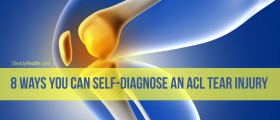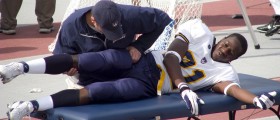
ACL Tear - Introduction
ACL stands for anterior cruciate ligament, the ligament which connects the upper leg bone (the femur) with the lower leg bone (the tibia) and maintains the stability of the leg. Injuries of this ligament such as partial or total tear are quite common in sports. If ACL tear is neglected the injury leads to rubbing of the bones against each other and damage of the surrounding tissues particularly cartilage which covers the ends of the bones. In some cases even menisci may be trapped. ACL tear is commonly related to the sports. It may also occur during rough play, in vehicle collision, due to falls and sometimes even at work (depending on the profession).
What are Signs and Symptoms of ACL Tear?
The symptoms and signs of ACL tear basically depend on the intensity of the injury. They may also vary in case there are accompanying injuries. Pain is the leading symptom of ACL tear. It is usually excruciating and increases with movement of the injured leg and straightening or bending of the affected leg. The pain which occurs right after the injury is sharp and it soon changes to throbbing.
One of the most common signs of ACL tear is the 'pop' sound which occurs at the time of the injury. The pain occurs right after the 'pop' sound.
Typical characteristic of all injuries, including ACL tear, is swelling of the injured area. The knee is swollen, the skin of the knee appears tight, puffy and large. Initial swelling is not so intensive but it tends to increase in time.
Two more signs of ACL tear are instability and loss of strength. These signs are quite noticeable during examination. Instability is a characteristic of minor ACL injuries and partial tears while severe forms of ACL tear feature with difficulty in moving around and knees 'giving away'.
And finally, ACL tear is always accompanied by limited motion. This is a consequence of swelling, pain and damage to the surrounding tissues.
What should be done after ACL Injury
The treatment basically depends on the severity of the tear and whether the one has suffered accompanying injuries. The swelling withdraws spontaneously within a couple of weeks. Minor partial tears may heal on their own and do not cause instability. On the other hand, in complete ACL tear instability is more intensive and noticeable.
Initial treatment includes alleviation of pain. Swelling may be reduced with cold compresses or ice bags. The injured leg is supposed to be elevated. ACL tear requires surgical repair. After the surgery patients undergo physical therapy.

















Your thoughts on this
Loading...